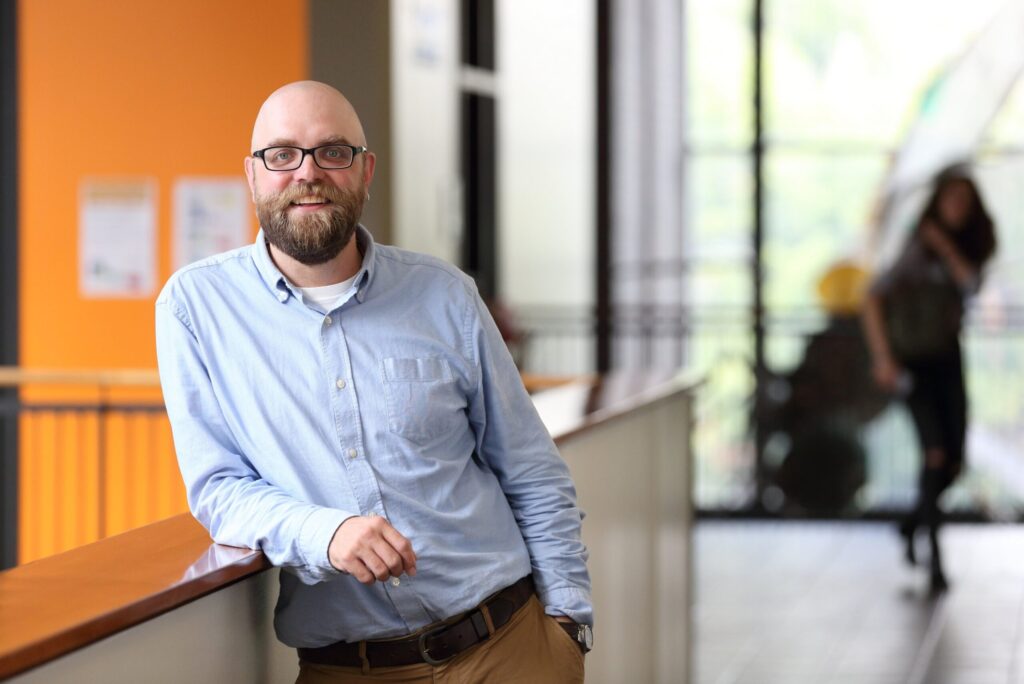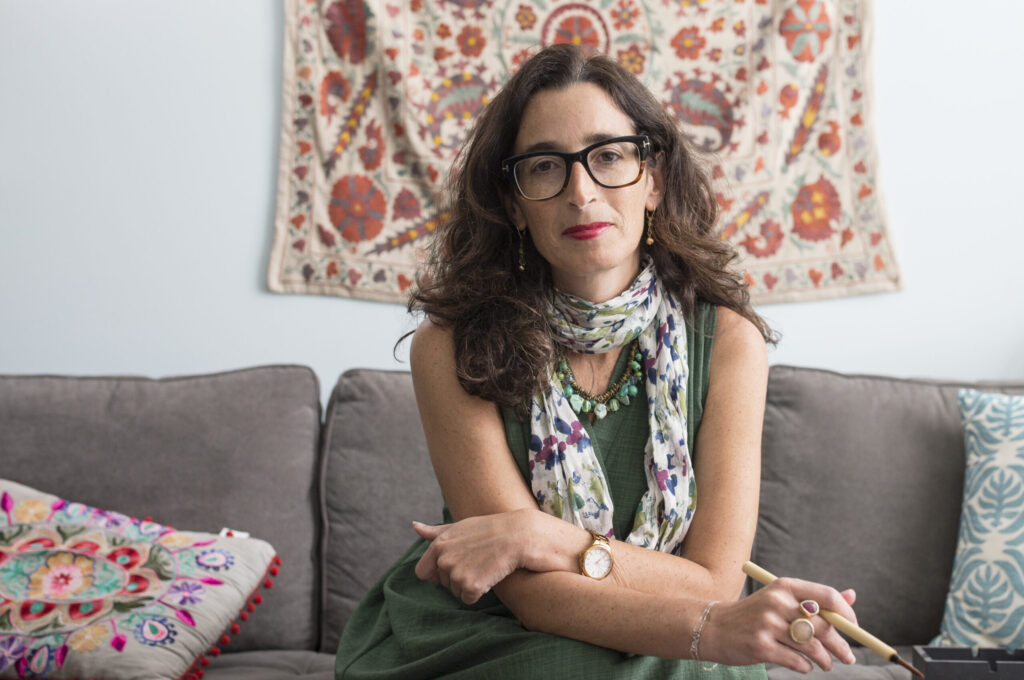As virtually everyone who studies or works at a university knows all too well, an alarmingly high number of students are struggling with serious mental health challenges like anxiety and depression.
Six thousand McGill students reached out for mental health assistance through the University’s Student Services last year. Over the past five years, there has been a 35 per cent increase in the number of McGill students seeking that type of help.
It isn’t just happening here.
According to the 2016 National College Health Assessment Survey of 44,000 Canadian postsecondary students, close to 20 per cent were contending with anxiety or depression. A survey of more than 25,000 Ontario university students by the American College Health Association in 2016 pointed to rising rates of anxiety (a 50 per cent increase) and depression (up by 47 per cent).

“There has definitely been a change since I started teaching here in the early 2000s,” says Dean of Students Christopher Buddle, a professor of natural resource sciences. “Anxiety, mental health – these were certainly issues that we saw some students dealing with, but not in the same everyday manner. For most professors now, this is something that comes up regularly. In my role as dean of students, it comes up every day.”
Nancy Heath, BA’84, a James McGill Professor in the Department of Educational and Counselling Psychology, is a leading authority on the mental health challenges that students cope with and the methods they use – healthy and not – for dealing with the stress and anxiety they face.
“People ask me all the time, ‘Is [the level of anxiety] really higher for students than it used to be?’ There’s no question it’s higher.”
Heath points to research on the subject that dates back to the 1930s, and anonymous survey data related to university students and their mental health. “What we clearly see is a higher endorsement of symptoms of anxiety and depression [in recent years]. The degree to which students are indicating real distress levels, that is significantly higher and it has absolutely risen.”
The need to reassess
Over the last few years, as requests from students for help with their mental health challenges kept growing, McGill Student Services engaged in an in-depth evaluation of how it was able to respond to that demand. Though the University had significantly increased the size of its counselling staff, it became clear that more needed to be done.

The process involved surveying McGill students to gauge their thoughts and concerns, focus groups to dig for more information, site visits to other postsecondary institutions across the country to get a sense of best practices, and a consultative process that involved deans, faculty, staff and students at both the undergraduate and graduate levels. “It really was a University-wide process,” says Vera Romano, BA’96, MEd’00, PhD’07, the director of McGill’s new Student Wellness Hub.
“The feedback we got was that once students accessed our services, they were actually very happy with the services,” says Romano. McGill’s team of mental health care experts – counsellors, psychologists, psychiatrists and others – generally received high marks for their work. “But students weren’t happy with how they accessed our services.”
For one thing, wait times were too long. Sometimes, it could take several weeks before a student could see somebody. For another thing, students found McGill’s approach to offering assistance for mental health concerns baffling.
“It could be extremely confusing for everybody involved,” admits Romano, the former director of McGill Counselling Services. Aside from Counselling Services (with its counsellors, psychologists and social workers), there was also Mental Health Services (with psychiatrists and psychotherapists) and the Student Health Service (with physicians and nurses). “You had professionals providing very similar things [to students], but they were providing them in very different ways, with different processes and procedures,” says Romano. “It was very fragmented.”
Even some professors were perplexed. “They didn’t always know how to connect students to us,” says Romano. “A student who is dealing with something should not be trying to figure out, ‘Do I need a psychiatrist, do I need a nurse, do I need a counselor?’ We’re trying to remove that.”
A new approach
The Student Wellness Hub, which will be formally launched this fall, will be the focal point for mental and physical health services for students from now on. The different units in Student Services that dealt with mental and physical health issues are all being folded into the Hub to make things simpler and more streamlined.
It’s the central component to a new approach to mental health services that is supported by a $14 million investment (The Rossy Foundation has been a key source for some of that funding).
Five trained staffers – two more than before – will be available at the Hub’s check-in area to talk to the students who come in and to advise them about which health professional at the Hub is in the best position to provide help. “We’ve introduced drop-in appointments for counselling, so a student can walk in, and if they have something that is timely – they just experienced a painful break-up, for instance – they don’t have to wait for weeks or months,” says Romano.
Martine Gauthier, the executive director of Student Services, says that one of the chief findings of the evaluation period that led to the creation of the Hub was the importance of early intervention. “When we looked at the data, we noticed that, for most students, one or two sessions with one of our professionals was enough to help them get back on track.
“I’m not talking about a serious mental illness here,” says Gauthier, “but the sorts of challenges that students regularly face. You’re worried about failing a course. Your boyfriend wants to break up. There is tension with a roommate. These are the sorts of things that can spiral after a while if you don’t know how to deal with them. And then it just becomes a bigger problem and starts affecting other parts of your life. If you can find a sympathetic sounding board early on and learn some healthy coping mechanisms, it can make a huge difference.”
While the Hub will be playing an essential role, Gauthier says it represents only one of many changes. “What we really want to do at McGill is build a culture of wellness here.” Armaghan Alam, BSc’19, welcomes that new approach. Alam, who just completed his undergraduate degree in anatomy and cell biology, was a mental health commissioner for the Students’ Society of McGill University and was the chair of support services for McGill’s student-run Peer Support Centre.

“We learn how to write papers here, how to become informed, how to look at things critically. Those things are all important, but so is being resilient when it comes to mental health,” says Alam. “I think McGill has a responsibility to teach us how to be resilient. Because things don’t necessarily get easier after you graduate. If McGill really wants its graduates to become leaders in their fields, they’ll need to be resilient. They’ll need to be ready for whatever the world is going to throw at them.”
“In the last few decades, we’ve all kind of accepted that our physical health is something we have to work at,” says Romano. “We know we have to engage in some form of physical activity. We have to pay attention to our diet. What the evidence is showing, is that mental health is very similar to physical health. A lot of it is about adopting good habits. We have to help our students form those healthy habits, because they’re not easy habits to form.”
Romano points to one example. “One of the things we see the most is that our students don’t sleep enough, and sleep deprivation is really a very detrimental thing for our mental health.” McGill students are driven to succeed academically and too many of them think that skimping on sleep is one way to do it. “We want them to see that getting the proper amount of sleep is linked to their success. Those two things are not in competition with each other. They actually support each other.”
A culture of wellness
If Gauthier and Romano hope to see a new culture around wellness take root at McGill, the University’s new local wellness advisors will be key ambassadors for that culture shift.
Some of these advisors are already busy at work and a full complement of 12 will be in place by the fall. Each will focus on their own individual ‘beats.’ Most will be headquartered in individual faculties, but some will be assigned to specific constituencies (international students, graduate students, students in McGill residences, the Department of Athletics and Recreation).
The advisors will engage in outreach activities tailored to these different parts of the University. They’ll offer workshops and other health-related programming and organize group sessions around specific issues.
Starting this fall, the local wellness advisors will also begin to meet with students on a one-to-one basis. “It’s really a coaching role that they’ll be playing, not a therapeutic one,” says Gauthier. “The local wellness advisors will be there to provide some early intervention and to help students build their own toolboxes for dealing with some of the things that they might not have faced before.”
Shannon Walsh, BA’99, MEd’01, is the local wellness advisor for Macdonald Campus. She and the other wellness advisors have been busy meeting with students, faculty and staff in their respective areas to get a sense of their concerns. “We’ll adapt our programming to meet those needs,” says Walsh. That’s vital, says Romano. “Some issues are universal, but different parts of the University have different cultures. We want to make sure that our programming is not just a cookie-cutter approach.”
“Graduate students have had a lot to say so far,” says Walsh. “They talk about how they deal with different pressures than undergraduates, how they have to balance multiple responsibilities. A couple of graduate students from one department met with me and wondered if we could start up a summer group where they could meet with other graduate students and talk about the things they’re dealing with in their lives. I said, ‘Okay, let’s book it.’”
The wellness advisors all have backgrounds and training in different forms of counselling or therapy, says Walsh, and, coincidentally, the first seven that were hired are all McGill graduates.
“As alums, we all have an attachment to the University,” says Walsh. “We also have a sense of what it’s like to be a student here. We have some experience with the culture. People choose McGill, in part, because of its prestige and its high standards. Students really value that. But it isn’t always easy, right? It can be a stressful environment.”
Christopher Buddle wonders if it has to be quite so stressful.
“We don’t have a lot of control in terms of all the things that our students deal with, but one thing that we do control is the classroom environment. The way we teach, the way we do final exams, and the way we do assessments. Almost every student, when they talk about mental health, it’s very closely tied to the stress and anxiety related to assessments, and the pressures around doing well at university. That’s such an area of high importance to our students.”
Beginning this fall, Buddle will be working with Laura Winer, the director of Teaching and Learning Services, to review the University’s approach to assessing its students. “One of our principal concerns is promoting this idea of wellness.” The goal isn’t to lower standards in any way – students take pride in the fact that the University is academically demanding, says Buddle. But there might be techniques for lowering students’ anxiety levels in ways that don’t affect academic standards.
“One thing is final exams,” says Buddle. “I mean, why do we have three-hour final exams? Many professors don’t realize that they don’t have to have final exams. So why don’t we rethink our whole approach to the final exam season, and the pressure that it puts on students?” One option might be for courses to include more quizzes throughout the semester and for the final exam to be worth a smaller percentage of the overall grade.
Amplifying the anxiety
“The sources of stress for this generation of students aren’t all that different from past generations,” says Heath. “What is different today is that they are amplified for our young people to such a tremendous degree.
“When I went to McGill, I looked at the student in the next seat and asked myself how I was doing compared to them,” says Heath. “But now, with social media, students are seeing everyone else’s success every single day measured against their own. It’s a very different level of performance stress.”
Heath says social media also makes it more difficult for students to seek temporary refuge from their troubles. “It used to be that you would have these different social networks. You might have one group through a hobby, one through your school, and another through a sports activity, and they didn’t necessarily connect. Your sports friends wouldn’t know about your problems at school and you could leave that behind for a while. You can’t do that anymore. It follows you everywhere.”
“I’m always very torn when I talk about technology, because I find that it’s also a solution, a way of connecting, especially for marginalized populations,” says Romano. “But social media is designed, in a very powerful way, for social comparison. And we know that too much social comparison has an impact on our mental health.“
Instagram can be fun – until you start obsessing over why a classmate attracts so many more likes than you do. “It’s also not necessarily a very accurate way for us to compare ourselves,” says Romano. “Our social media presence is in some ways very manicured. You might not know what that other person is struggling with. You don’t necessarily get to see that.”
Heath says our 24/7 digital culture ratchets up the stress level in other ways too. Young people in earlier eras may have had to contend with anxiety-provoking world events – the Cold War and its nuclear arms race, for instance – but not in the same inescapable manner. The frightening impact of global warming, political turmoil, human rights violations – it’s all there on your smartphone, all the time. “It is so much more accessible to young people [today] and in very graphic and immediate ways. Day by day, they are exposed to things that previous generations were not exposed to in the same way.“
If anxiety and depression are common phenomena on university campuses these days, other mental health challenges, namely loneliness and feelings of isolation, might be a more acute problem at McGill than at other universities. McGill prides itself on the fact that so many of its students come here from other provinces and countries, but those students are also leaving behind their families and friends to come to a city that might feel very foreign to them.
“I think loneliness and isolation are big factors related to concerns about mental health,” says Buddle. “If you come from a different country, you don’t have the same local support network, and I think it hits our international students at a different rate than local students.”
Naz Böke, MEd’18, who has collaborated with Heath as a member of the professor’s Development and Intrapersonal Resilience Research Team, says that many students struggle with loneliness – not just international students. “That’s not what people expect to hear, because this is supposed to be that period where you make friends that last a lifetime.” Forging those connections can be rough, though. “You walk into classes that are huge and it can be very difficult to connect with people when you are in that setting.”
Peer-to-peer support
“That’s one of the reasons why we are emphasizing a lot of group activities and peer-to-peer support,” says Romano. “Listening to other students talk about their struggles and having them help one another can be a very effective way to feel less isolated.”

That’s the role played by the student-run Peer Support Centre, which deals with about 400 students each year. “We offer non-judgmental, confidential one-on-one peer support,” says Alam. “It’s an open-door policy and people can come in with anything.” Depending on the problem, reaching out to a fellow student can be less intimidating than seeing a mental health professional, says Alam. But if a situation is particularly serious, the centre’s volunteers are thoroughly trained to respond appropriately, and some students who drop by the centre are referred to the Hub for expert care.
“We’ll help them book the appointment and we’ll even have someone sit with them [at the Hub] before the appointment if they’d like that,” says Alam. “We’ve built up a very good relationship with [Student Services].”
Gauthier expects those links to grow tighter. “We hired a peer support manager and this is a new position for us. [Her] job is to make connections with all of the student organizations out there who are interested in working with us [on wellness].” Gauthier says student groups are doing valuable work and she wants to support that. “Our nurses will be working with [them], our dieticians will be working with [them], our counsellors will be working with [them], to engage them in training so that whatever is going out there in terms of information is actually verified and based on best practices.”
The west wing of the Brown Services Building has been renovated to accommodate the Student Wellness Hub, as well as a new Healthy Living Annex that will be connected to it. Peer support will be available at the annex and nurses and dieticians will be available for consultations on certain days.
“Health promotion is a critical component of student wellness. And it was one of our biggest gaps in terms of providing care to the students,” says Gauthier. “The Healthy Living Annex will be a place for students to come and find information and resources for physical health, mental health and sexual health.”
The restructuring that is going on in Student Services around wellness is taking place online too. “We had about 20 different sites that dealt with health and wellness,” says Gauthier. “We’re combining all of that into one, the Virtual Hub. We want to make it easy for students to find the information they need.”
Student Services is also collaborating with researchers in McGill’s Geographic Information Centre to make it simpler for students to find off-campus resources, depending on what neighbourhood they live in.
“Our students have informed this process every step of the way,” says Gauthier. “Students have been involved in all the discussions leading up to this, in the development process, in the work groups and on the steering committee. And that’s going to continue. We’ll have a student advisory committee to help us hear the student voice. If something needs to be tweaked, we want to hear that.”
Alam was one of the students involved in the process that led to the changes. “There can be a lot of pessimism and a lot of negativity on campuses about what universities can and can’t do” in terms of helping students with their mental health challenges, says Alam. “I do think McGill has really started to change that perspective. It’s trying its best to listen to what students are saying.”
“I think students are really seeing how [we are making] a very tangible and direct commitment to student mental health,” says Buddle. “I think there is a positive sense that we’re going in the right direction.”


